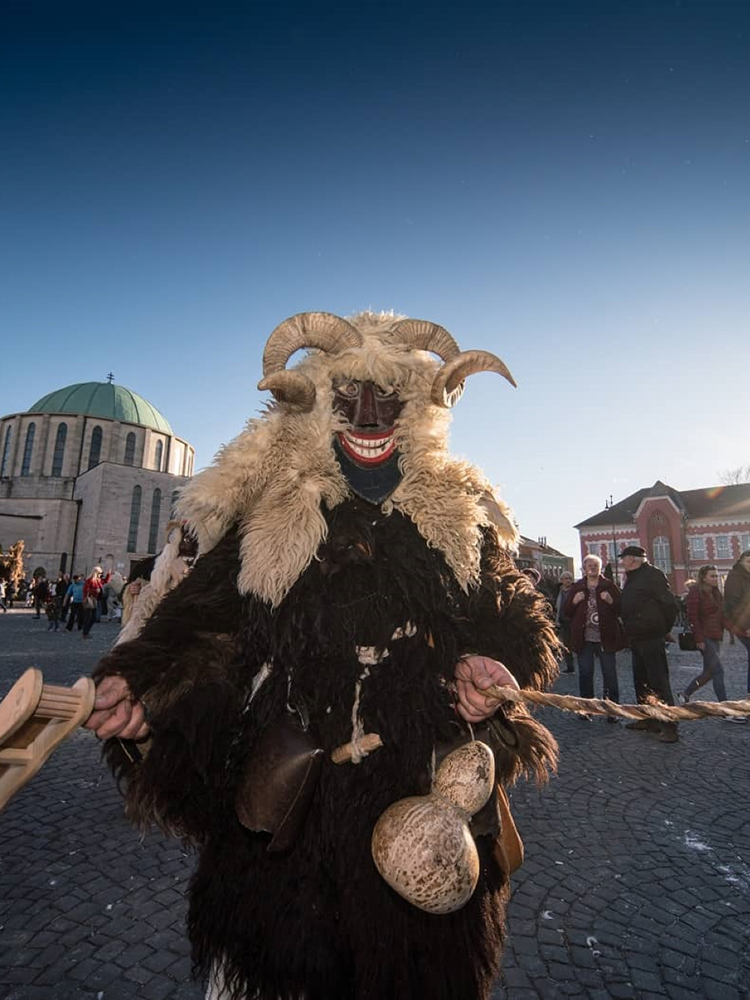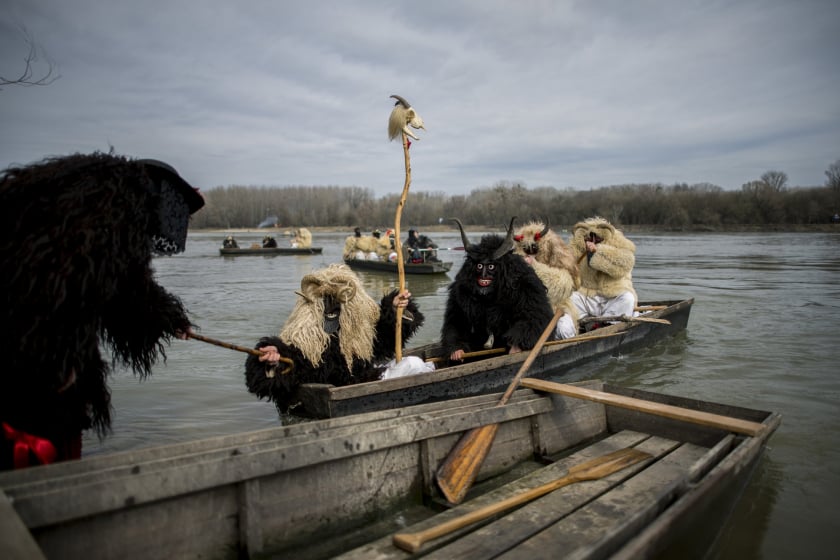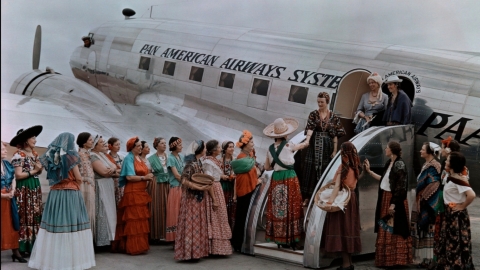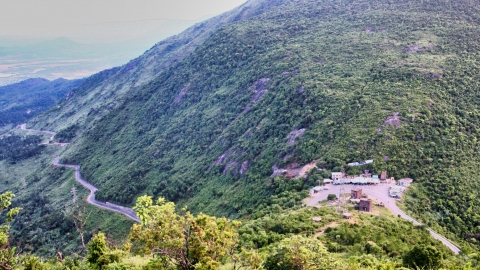Every February, the Hungarian town of Mohács is filled with merrymaking during the Busójárás festival, held during the Farsang (Carnival) season. Farsang is the name given to the festive season in Hungary, during which a series of events are held across the country to ward off winter. Busójárás is the main event of the season and takes place only in one place: the town of Mohács, near Hungary’s border with Croatia. It is a festival of the Šokci people, a Croatian ethnic minority of Mohács.

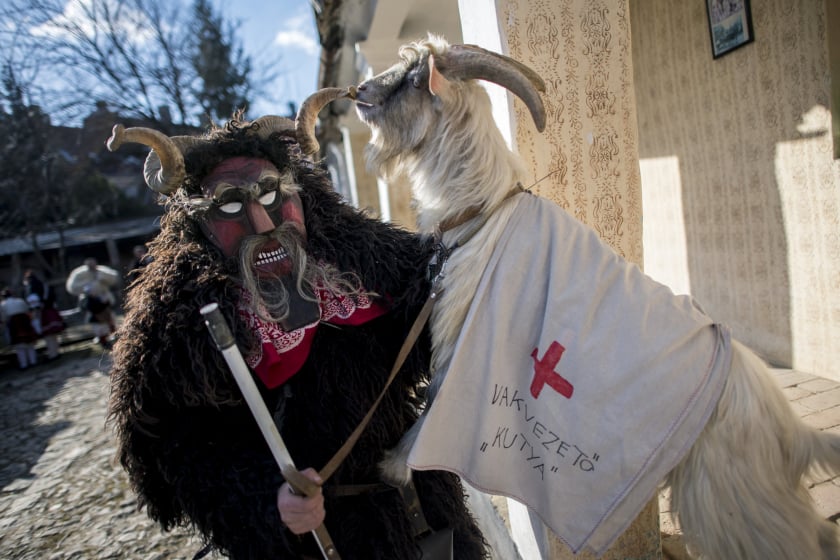
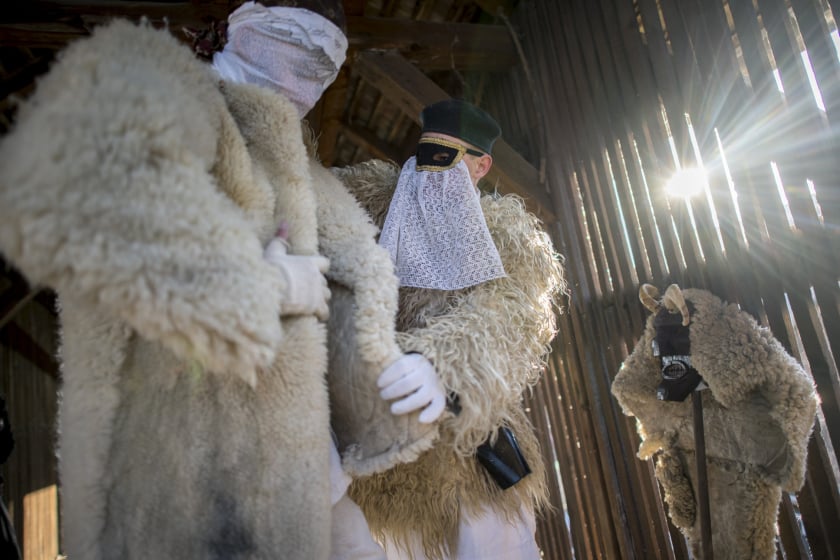
Busós's costume is made of sheep's wool, his mask is made of wood. Photo: MTI/Sóki Tamás
The festival is based on a legend that the people of Mohács drove out invaders hundreds of years ago. During the Ottoman occupation, the locals were forced to flee the town and hide in the nearby marshes. One stormy night, on the advice of an old man named Šokac, a group of people dressed in scary masks, made rattling objects and returned to Mohács, causing the invaders to flee, thinking they were demons. At night, the Šokci crossed the Danube in their boats and drove the Ottomans away.
Although the story has no historical basis, the legend of Busós remains popular among the townspeople. Not only does it serve as a re-enactment of past events, today the festival is held to ward off winter and celebrate the arrival of spring.
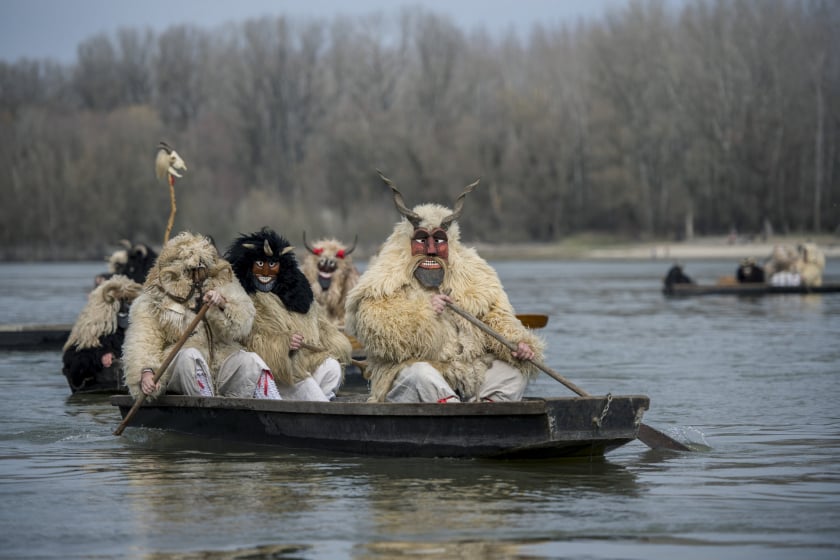
The soul of the Busójárás festival is the Busós. Busós are traditionally men dressed in scary costumes consisting of unique wooden masks and woolen cloaks made from sheepskin. They parade around the crowd throughout the town, making loud noises and causing chaos as a symbol of warding off winter, evil spirits and bad luck. Although most Busós are men, women can also participate, and they dress as female Busós, or they wear costumes reminiscent of Ottoman Turk women.

The Sokác women wait for busós.
Busójárás takes place at the end of February, lasting for 6 days from Thursday to Tuesday. In ancient times, Busós walked from house to house expressing their good wishes, and in return they received drinks and food. Today, most of the folk customs have been lost but many other highlights have taken their place. Typically, the event of Busós crossing the Danube in boats, releasing the coffin of "Old Man Winter" into the river. The biggest celebration takes place on Sunday called Farsang Vasárnap (Farsang Sunday).

Children participate in the carnival.
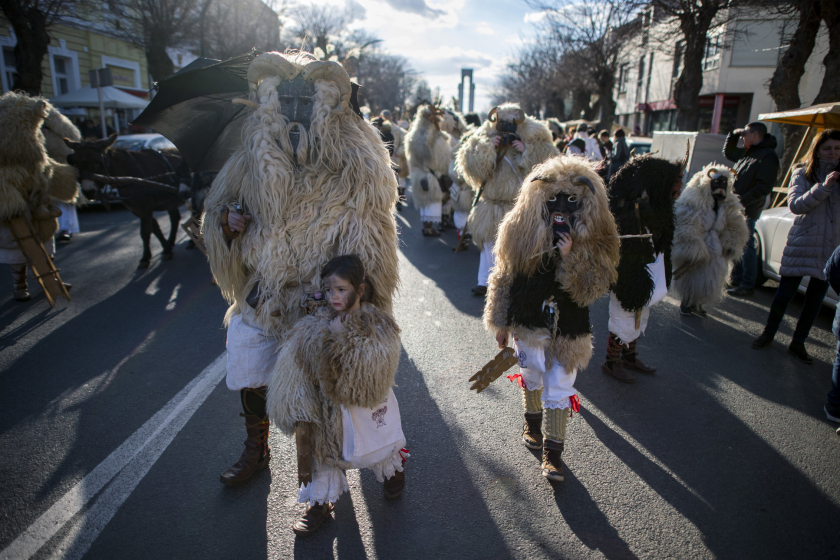
Street parades take place in Mohács during the festival. Photo: MTI/Sóki Tamás
Tuesday is also an important day. On this day, at night, there is the Farsang Burial Ceremony. Here, people burn a man made of straw in a large bonfire. Meanwhile, the townspeople hold hands and dance around it, drinking wine. The event also includes a children's costume contest, where children play and wear wooden masks. The festival usually attracts around 800 busós and 200 people wearing other costumes for the event.
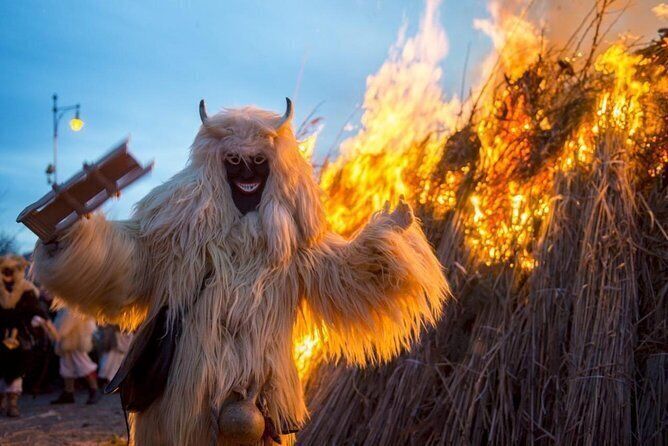
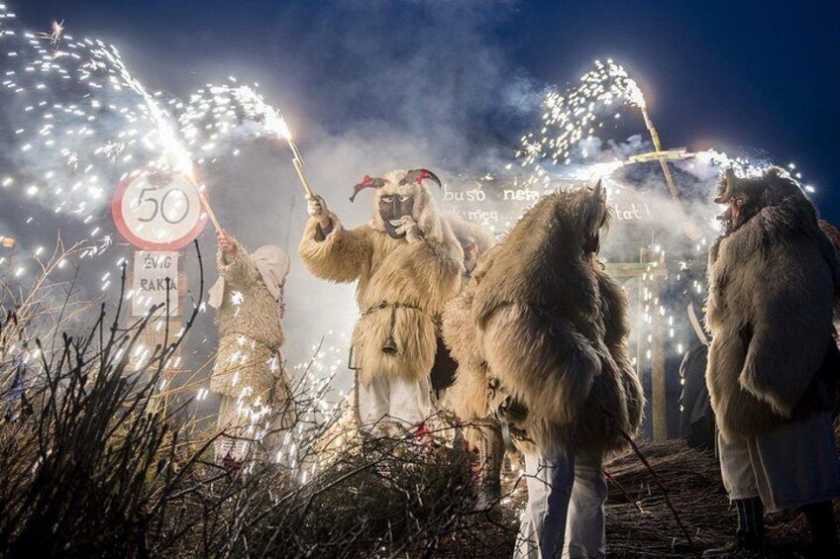
Busós dance around the fire on festival night.
In 2009, Busójárás was recognized by UNESCO as an Intangible Cultural Heritage of Humanity because the festival is “not only a social event” but also has an important influence in Hungarian culture.





